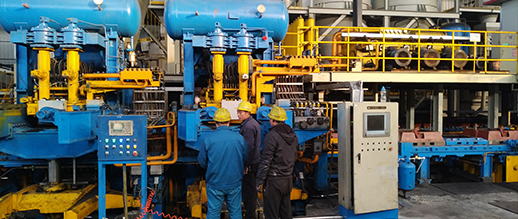Self-Engaging Drum Brakes for Enhanced Vehicle Safety and Performance Solutions
Self-Energising Drum Brakes An Overview
Self-energising drum brakes are a crucial component in automotive braking systems, providing enhanced stopping power and efficiency. These brakes operate on the principle of converting the vehicle's kinetic energy into braking force through a unique design that allows the shoes to “self-energise” during operation. This article will explore the operational principles, advantages, and potential drawbacks of self-energising drum brakes, as well as their applications in modern vehicles.
How Self-Energising Drum Brakes Work
The basic construction of a self-energising drum brake includes a curved brake drum, brake shoes, and a hydraulic or mechanical actuation system. When the driver applies the brakes, the brake shoes are pressed against the inner surface of the drum. As the drum rotates, the shoes experience a force that causes them to pivot outward against the drum surface due to the design of the brake mechanism.
This outward pivoting action creates a wedging effect, which means that as the shoes move, they push harder against the drum. In effect, each shoe's friction against the drum generates additional force, reducing the effort needed from the driver to apply the brakes. This self-energising mechanism allows for a more effective and responsive braking system, especially beneficial in emergency situations.
Advantages of Self-Energising Drum Brakes
Self-energising drum brakes offer several significant advantages over conventional braking systems. First and foremost, they provide superior braking efficiency; a small input force from the driver translates into a powerful stopping force. This increased efficiency can lead to shorter stopping distances, which is critical for safety.
Additionally, the self-energising effect means that the brake system can be designed to be lighter and less complex since less force is required from the brake pedal. This can contribute to improved overall vehicle efficiency and performance.
self energising drum brakes

Drum brakes also tend to be more durable than disc brakes in certain applications, particularly in conditions where water or debris may impair braking performance. The enclosed nature of drum brakes protects the braking components from external elements, thereby extending their lifespan and reliability.
Potential Drawbacks
While self-energising drum brakes are effective, they do come with some drawbacks. One notable issue is the phenomenon of brake fading, which can occur under prolonged heavy use. This condition can lead to decreased braking performance as the heat generated in the drum builds up, causing the brake fluid to vaporize or the brake shoes to lose their effectiveness.
Additionally, while drum brakes are generally less expensive to manufacture and maintain, they can be more challenging to service compared to disc brakes. The intricate components often require more time and specialized knowledge when performing maintenance or repairs.
Finally, the weight of the drum assembly can be a concern; while there are lightweight materials available, traditional drums are heavier than comparable disc brake systems, which can affect overall vehicle weight and performance.
Applications in Modern Vehicles
Despite their drawbacks, self-energising drum brakes remain popular in various applications. They are often used in rear-wheel setups in many passenger vehicles and in certain commercial vehicles where their durability and efficient braking action are advantageous. In recent years, some manufacturers have begun integrating advanced materials and designs to enhance the performance of drum brakes, further solidifying their place in modern automotive technology.
In conclusion, self-energising drum brakes are an essential part of many braking systems, providing efficient, reliable braking performance. With their unique self-energising mechanism, they offer significant advantages in terms of efficiency and durability, though they also present some challenges that must be managed. As automotive technology continues to evolve, the future of self-energising drum brakes will likely involve innovations that enhance their performance while minimizing their shortcomings.
-
The Power and Reliability of Brake DrumsAmakuruAug.27,2025
-
The High-Quality Truck Brake DrumsAmakuruAug.27,2025
-
Quality Brake Drums for Reliable PerformanceAmakuruAug.27,2025
-
Get the Quality Semi Trailer Brake Drums for Your FleetAmakuruAug.27,2025
-
Everything You Need to Know About Brake DrumsAmakuruAug.27,2025
-
Enhance Your Vehicle's Performance with Reliable Brake DrumsAmakuruAug.27,2025
-
Truck Drum Brake Spring Replacement ProcedureAmakuruAug.22,2025


